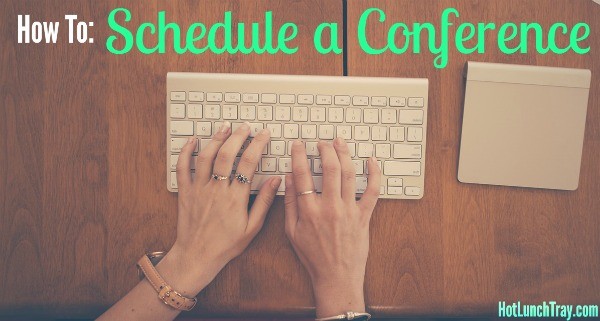If you are lucky enough to attend educational conferences you know they are as much an experience as anything else. The comradery, the openness with which teachers learn from each other is inspiring! So how do you approach such an event and schedule a conference?
Any attendee at any conference must first acknowledge they will not see it all. After leaving a conference most teachers identify one or two big ideas they are taking away from the conference. The thought that one cannot exactly predict that idea going into the conference is hard for many. But to embrace the conference which you get versus the conference other people participated in is essential to getting the most out of your experience.
A first step to schedule a conference is to select sessions without regard for schedule. This is accomplished two ways. First you can either read descriptions and titles and mark those which pique your interest. Second you can search by presenters you know and select from their sessions.
Session titles are only to be trusted to provide a subject. Remember that presenters compete to present at conferences, so titles are often the focal point of creativity and hyperbole. Session descriptions are better indicators of how the session is delivered; is the presenter doing all the talking or are you doing something too? Learn the vocabulary of your particular conference as well. Are there clues that this session will be “sit and get (bored)” in the description? Terms like lecture and panel should clue you into that climate. Is the session called a workshop? If so, you should not expect to sit and take notes in the back row.
In a Twitter world, it is more common to know popular educational personalities you might be interested in hearing more from as presenters. Conferences often offers ways to browse presenters and see what they are presenting. You are likely to already know if you want to hear more about a topic or explore a new topic with a person you follow already on Twitter.
Once you have collected all the sessions you are interested in, only now consider the actual schedule. Find a way to look at your selections chronologically. Immediately you will see over lapping areas in your conference days. This is an opportunity to strategically plan with a colleague also attending the conference to obtain coverage of the content which interests you both. You should also find out if any sessions are recorded, what offers online materials either in the description or through the conference site. Peak attendance times are often scheduled with multiple popular sessions, so do not think you are making a high stakes choice which may be catastrophic, many great sessions happen at once.
Do not attempt the conference equivalent of the heptathlon, do not schedule sessions back to back. And certainly not when they are hallways, buildings, or blocks away. Think of time between sessions as potential connection times. Either with those you travel with or those kindred spirits you meet in sessions. Consider a lunch break too! Many conferences schedule snacks by vendors, check the program for clues to when and where those will be. Some conferences do not accept cash, again, know your conference offerings.
Schedule people over sessions. You expect to learn many new things from this conference, with whom are you planning on discussing these ideas? You need breaks between your learning to explore how the ideas you collect can be applied to your situation. Not only plan those breaks but be open to talking to other conference attendees; that means look up from your devices and greet others! It also means to schedule time each night or at the conclusion of the conference to sort through your thoughts, document some goals for yourself, and nurture relationships started a the conference.
I have three conferences in my future. You know how I am planning mine – how are you planning yours?






4 Pingbacks